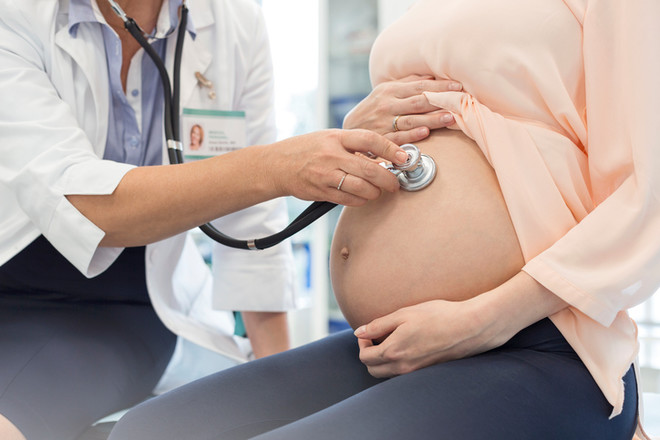Why does the Rh syndrome develop during pregnancy?
Rhesus conflict during pregnancy develops between the immune system of a woman with a negative blood group and the Rhesus-positive red blood cells of the fetus. Pregnancy in Rh-conflict: how to determine?Photo: GettyThe immunity of a woman faces a Rh antigen in two cases: after a blood transfusion with a positive Rh factor or a mix of red blood cells of a pregnant woman and a fetus. Usually, the placenta does not mix maternal and child blood - this is called the hematoplacental barrier. But the barrier function of the placenta is broken:
Pregnancy in Rh-conflict: how to determine?Photo: GettyThe immunity of a woman faces a Rh antigen in two cases: after a blood transfusion with a positive Rh factor or a mix of red blood cells of a pregnant woman and a fetus. Usually, the placenta does not mix maternal and child blood - this is called the hematoplacental barrier. But the barrier function of the placenta is broken:
- during childbirth;
- during placental abruption;
- because of an ectopic pregnancy;
- because of an abortion or miscarriage;
- because of uterine bleeding.
After entering the bloodstream of a positive motherRh-factor of the child immunity perceives the rhesus antigen by the alien and produces antibodies that destroy the erythrocytes of the fetus. In the normal physiological course of pregnancy, there is no rhesus antigen sensitization of the maternal organism. Therefore, the birth of the first child occurs with a minimal risk of the occurrence of Rh-conflict. The probability of inheritance of a positive blood group by the child is up to 75%. The risk of developing Rh-conflict in a pregnant woman with a negative Rh factor, if her partner is Rh-positive, is 50%.
How does Rhesus-conflict manifest during pregnancy?
After the destruction of red blood cells by antibodiesbodies release bilirubin, which accumulates in the body and causes the development of fetal brain hypoxia. To process the accumulated bilirubin and form new red blood cells, the liver and spleen enlarge. Pathological concentration of bilirubin causes hemolytic disease of the fetus. According to severity, the disease is divided into three types:
- anemic;
- icteric;
- hydropic.
The first variant is shown by mild anemia,increased concentration of bilirubin in the blood, but jaundice is not noted. The newborn recovers even without drug therapy. A hemolytic disease of moderate severity is manifested by icteric form. The newborn has anemia, yellowing of the skin, the liver and spleen is enlarged, therefore resuscitation therapy is prescribed. Pregnancy in the rhesus-conflict in edematous form in early terms ends in spontaneous miscarriage. The infant is born in a serious condition: severe anemia, hypoxic encephalopathy, swelling of the tissue, thoracic and abdominal cavities accumulate fluid.
Treatment and prevention
In the antenatal clinic, every pregnant womanThe woman is tested for the Rh factor. If her partner has the Rh antigen, the first test for the antibody content in a Rh-negative woman is done from the 18th to the 20th week. Up to 32 weeks of pregnancy, the antibody test in the blood is done monthly. The permissible concentration of antibody content is 1:4. Starting from the 32nd to the 35th week of pregnancy, the antibody titer is tested twice a month, and from the 35th week until delivery, the test is done every 7 days. An increase in the antibody titer over 1:4 confirms a Rh conflict during pregnancy. Titers of 1:64, 1:128 and more are considered critical. For prophylactic purposes, at the 28th week of pregnancy, a woman is given an injection of anti-Rh serum, which counteracts the formation of antibodies to fetal red blood cells. Within 48 hours after the birth of a child with a positive Rh factor, abortion, miscarriage or ectopic pregnancy, a woman is given anti-Rh serum, which prevents the occurrence of Rh conflict in the future. To treat a newborn, the following are used:
- hemosorption;
- blood transfusion;
- phototherapy;
- hyperbaric oxygenation.
With the help of hemosorption, the baby's blood is purified,passing it through the filters. To replace the decayed erythrocytes in utero or after birth, a blood transfusion is performed. The child with jaundice is treated with special blue lamps. Ultraviolet light acts through the skin and accelerates the cleavage of bilirubin. Treatment with hyperbaric oxygenation is the placement of a newborn in a pressure chamber with increased oxygen pressure to fight the hypoxia of the brain.









